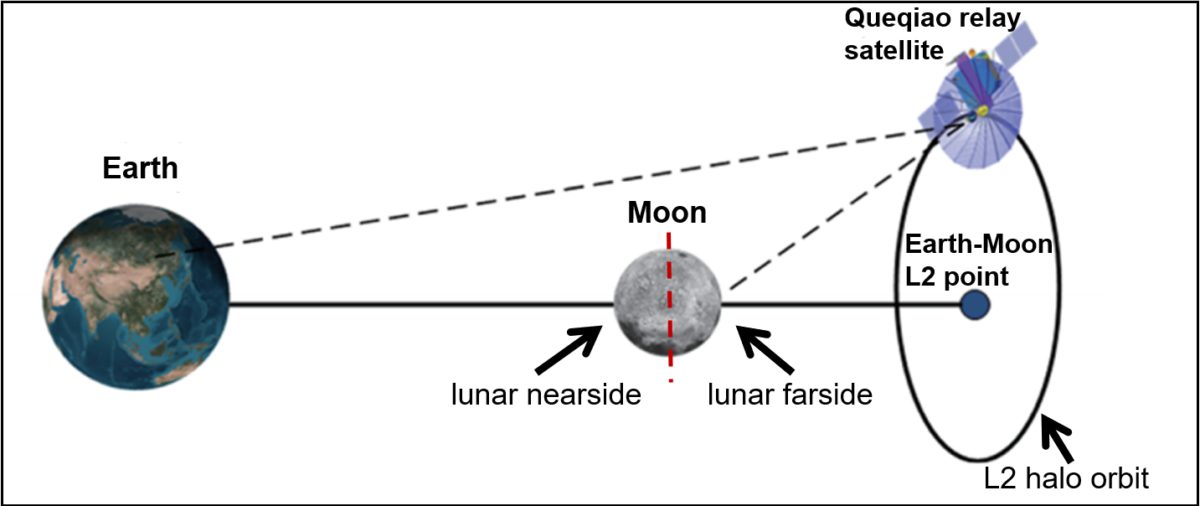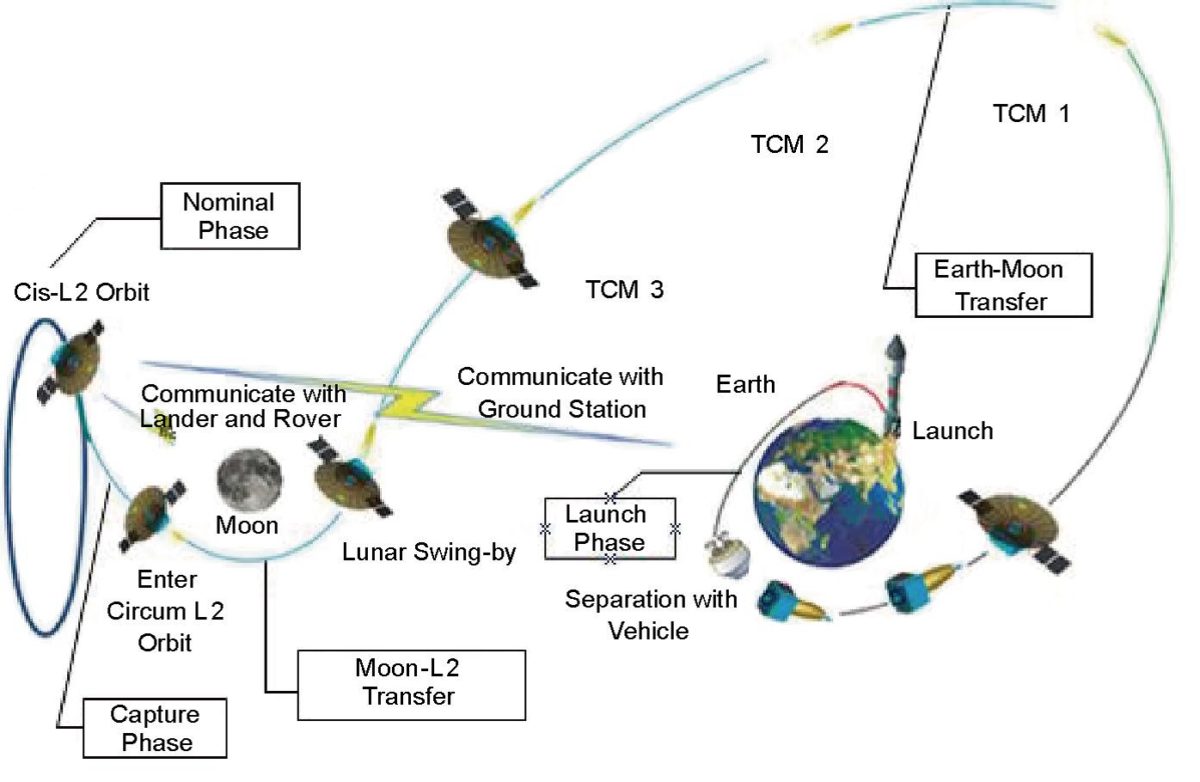Luyuan Xu • Jun 15, 2018
How China's lunar relay satellite arrived in its final orbit
After a 24-day journey, Queqiao, the relay satellite for China's Chang'e 4 lunar mission, successfully entered its Earth-Moon L2 halo orbit. A normal mission to lunar orbit usually takes four or five days, but Queqiao took much longer due to its special orbit. Here's a guide to the spacecraft's long and complicated journey.

Stage 1: from Earth to the vicinity of the Moon
After launch on May 21 at 5:28 a.m. Beijing time (21:28 UTC May 20), Queqiao was directly sent into an Earth-Moon transfer orbit without an Earth parking orbit phase. There are two kinds of transfer orbits from Earth to the vicinity of Earth-Moon L2. One is direct transfer, which is directly from Earth (or Earth parking orbit) to L2.
Another is lunar swing-by, which makes use of lunar gravity. This trajectory saves more energy but takes longer.
Qeqiao used a lunar swing-by transfer orbit with an apogee of about 400,000 kilometers from Earth. This transfer orbit usually needs 2 or 3 trajectory correction maneuvers (TCMs) and takes about 4 or 5 days to arrive at the Moon. On May 22, Queqiao made its first TCM, and that turned out to be the only one necessary.
On May 25, Queqiao performed another burn when it flew past the Moon at a distance of just 100 kilometers. This successfully put it on a Moon-L2 transfer orbit.
Stage 2: from the vicinity of the Moon to the vicinity of the Earth-Moon L2 point
Queqiao entered at the vicinity of the Earth-Moon L2 point four days later. It still needed to adjust its orbit many times to enter the L2 halo orbit required for its mission.
Stage 3: from the vicinity of the EM-L2 point to the mission halo orbit
On June 14, Queqiao finished its final adjustment burn and successfully entered the L2 halo mission orbit, which is about 65,000 kilometers from the Moon. This is the first-ever lunar relay satellite at this location.

Next, Queqiao will contact a series of relay communication tests with Earth.
Longjiang-2: Earth images from lunar far side
After launch and en route to the Moon on May 21, Queqiao deployed two microsatellites called Longjiang-1 and 2. Four days later on May 25, both satellites were supposed to perform a braking maneuver to enter lunar orbit. Unfortunately, only Longjiang-2 was confirmed to successfully enter lunar orbit, with a perigee of 350 kilometers and an apogee of 13,700 kilometers.
Longjiang-2 (also called DSLWP-B) was tracked by amateur radio operators. Its onboard camera, developed by Saudi Arabia, began operating on May 28 and successfully sent back images of the Moon the Earth.
Chinese DSLWP-B on S-Band, a great signal on 2275.211MHz. pic.twitter.com/NDpL1WHU9W
— UHF Satcom (@uhf_satcom) May 22, 2018

Chang'e 4 lander and rover: Soon to go
The Chang'e 4 lander and rover are planned to launch in December this year. They will land in Von Kármán crater at the northwestern South Pole-Aitken (SPA) basin of the lunar far side. If successful, it will be the first-ever soft-landing mission on the lunar farside.
Support our core enterprises
Your support powers our mission to explore worlds, find life, and defend Earth. You make all the difference when you make a gift. Give today!
Donate

 Explore Worlds
Explore Worlds Find Life
Find Life Defend Earth
Defend Earth



